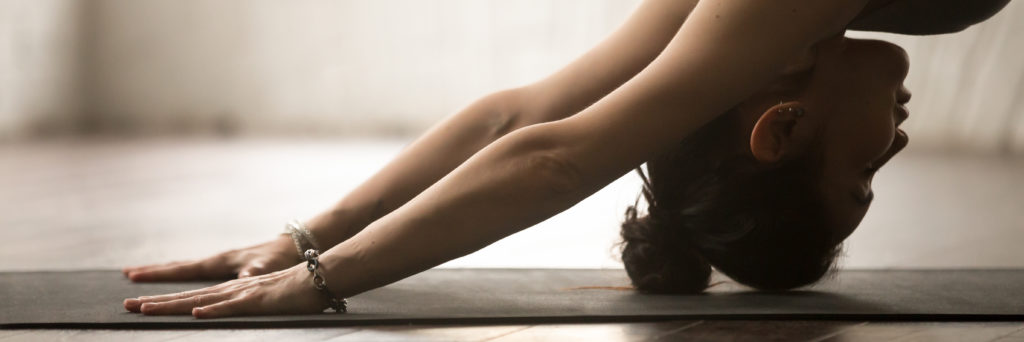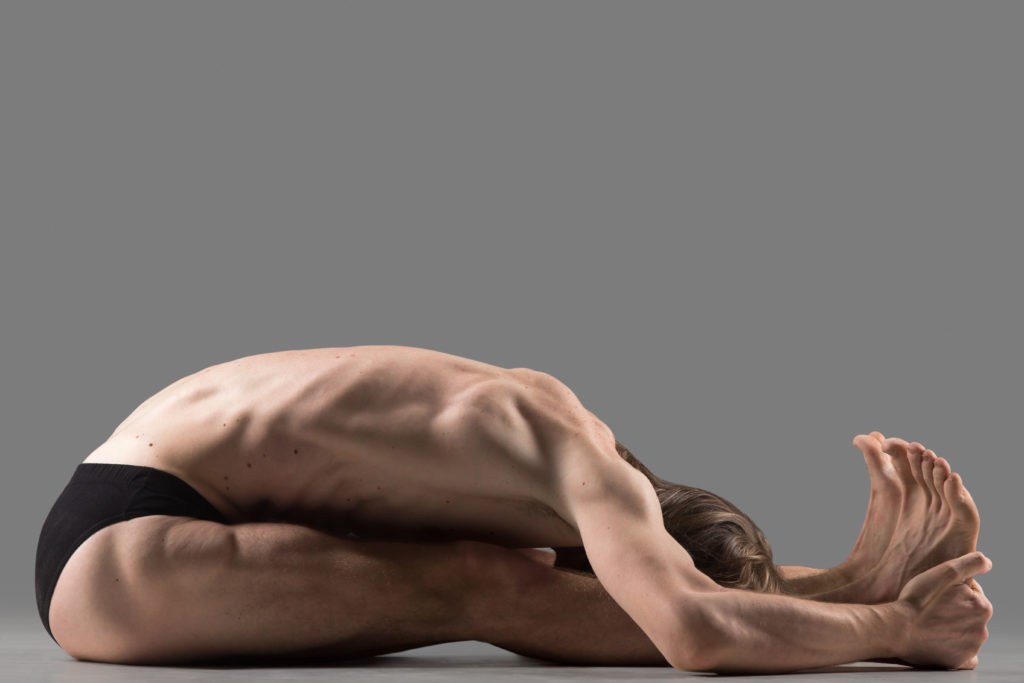Let’s be very clear that although in the West, asana has become synonymous with yoga, asana is not yoga, it is a part of yoga. Asana is a seat, posture or pose. It’s an anatomical position we place our body in.
When broken down like this, it is perhaps slightly easier to understand why the idea that we might cure thyroid disease purely through neck extension for example is improbable.
There is an impressive and ever-growing body of evidence that regular yoga practice confers numerous health benefits.
Particularly when it comes to the psychological benefits, I, like many practitioners, find that my own experience provides all the “evidence” I require. However, when it comes to some of the claims made about yoga with respect to specific medical illnesses and diseases, I often find myself concerned and confused by what is being promised.
We’ve all heard statements in class about yoga being used to help treat and heal various diseases. The healing claims I most commonly hear almost always relate to a specific asana — a yoga pose or posture.
Ustrasana (Camel Pose) supposedly cures hypothyroidism, for example, and Setu bandhasana supposedly improves liver disease. Apparently, those of us with polycystic ovaries should spend more time in Savasana. The list goes on.
Often these claims are made as a throw-away comment, or listed as a “benefit” while holding students in a pose, a la “this one’s great for…” But aside from a limited number of specific examples, it is difficult not only to establish the origin of such claims, but also to provide any scientific rationale for them.

A Note On Evaluating Health Claims
It is important to note that holding the health claims made about yoga to Western ideals of “proof” and expecting it to meet our scientific standards isn’t necessarily fair. Yoga is considered by many to be a science in its own right, its vast body of knowledge acquired over millennia of experiential and experimental study.
I respect and honor this lineage, and remain mindful that western medicine is certainly not the only healing art. Neither are randomized controlled trials and systematic reviews the only acceptable forms of proof.
Western medicine is, however, the discipline in which I am professionally trained, and it is from that perspective that this article is written.
In this article, I will discuss the ways in which these claims may or may not conform to a modern scientific understanding without intention to discredit alternative medical systems.
Where Do These Health Claims Come From?
First off, let’s consider where these health claims are coming from. Generally, you’re hearing such statements in class because your teacher was told by their teacher who was told by their teacher and so on. It’s rarely because the teacher is aware of or understands the scientific rationale as to why a certain posture might be helpful for a certain condition.
In fact, when researching this article, I found it incredibly difficult to get to the origin of why it was believed such a pose was beneficial, or who said so. For the most part, the answer seemed to be simply “because it is’,” or because somebody a long time ago said so. Here, and in general, unquestioning acceptance can be harmful and so I would urge you to remain objective, and always bring your inquiring mind onto the mat with you.

Camel Pose and Thyroid Disease
Let’s take the Ustrasana (Camel Pose) example. Supposedly, Ustrasana is beneficial for those with hypothyroidism (an underactive thyroid). Perhaps unsurprisingly, I was unable to find any reputable scientific evidence whatsoever that this is the case.
The claim seems to be based on the idea that extension of the neck improves circulation to the area, thereby “stimulating” the thyroid gland. While I can appreciate that on the face of things this might sound plausible, it’s a gross oversimplification of both our physiology (how our bodies work) and the pathophysiology (disease process) of thyroid disease.
In other words, more blood does not mean better function, and a lack of gross blood supply in the area of the thyroid is not the cause of thyroid disease. The thyroid is an intricate hormonal gland, and its function is not impacted by the way we move our neck. If it were, we might question the sensibility and practicality of its anatomical location.
Savasana and Polycystic Overarian Disease
Even when the rationale for a yoga-related health claim is more robust, I’d still advise steering clear of such claims. Take Savasana (Corpse Pose) supposedly treating Polycystic Ovarian Syndrome (PCOS). The basis of this claim is Savasana’s ability to induce a sense of relaxation.
While there is emerging evidence implicating the stress hormone cortisol in the pathogenesis of PCOS, the role of stress in the onset of disease is yet to be substantiated. There’s also significant evidence that other factors, such as genetic predisposition and obesity, also play a role.
In other words, we don’t actually know what causes PCOS. Stress might play a role, but we’re not sure how. And, in any case, it looks like there are several other factors at play.
Once again, it’s just not that simple.
The Difference Between Yoga and Asana
Now this absolutely does not mean that yoga isn’t a potentially impactful practice for those with thyroid dysfunction or PCOS. It just means that there’s no scientific evidence that a specific posture is – and that is the key point here. Let me be very clear that although in the West, asana has become synonymous with yoga, asana is not Yoga – it is a part of Yoga. Asana is a seat, posture, or pose. It’s an anatomical position we place our body in.
In fact, in the Ashtanga Yoga practice, asana is only one of eight limbs, including things from ethical standards, to self-discipline, from sensory transcendence to cultivating quietness of the mind.
To the extent that Yoga is a useful remedy for these medical ailments, it’s because of it’s a comprehensive approach to living, not a transactional asana equals systemic healing sort of relationship.

When Can Specific Asana Practices Be Helpful?
Yet, it’s important to acknowledge that there are some instances when placing the body in a certain anatomical position or performing a specific movement does benefit a medical condition. This is generally limited to structural complaints, and here we might see overlap with several of the principles of physiotherapy.
A good example would be sciatica, in which the sciatic nerve root is compressed during its passage through the spine, causing pain and irritation. Several postures can be used to alleviate the pain of this condition by relieving pressure and creating space in the spine, thereby lessening the impingement. These include postures such as side-lying Savasana and Ardha Viparita Karani (Half Legs-up-the-wall Pose) using pillows or a chair.

Think Twice Before Repeating Health Claims
We hold a responsibility as teachers and serious practitioners to consider the origin of any health claims made in class, the basis for those claims, and what evidence we have to suggest they are true before repeating them as fact. Do we understand why they are thought to be helpful, and are we clear in our intention when we provide this information to students?
Remember that even general asana practice (to include various postures) should be regarded as only a part of yoga. We actually see the biggest healing impact when it forms part of an embodied yoga practice that includes pranayama and mediation.
Used in this way, yoga really can heal, and that is something we will look at in detail for several major conditions over the course of this series.
